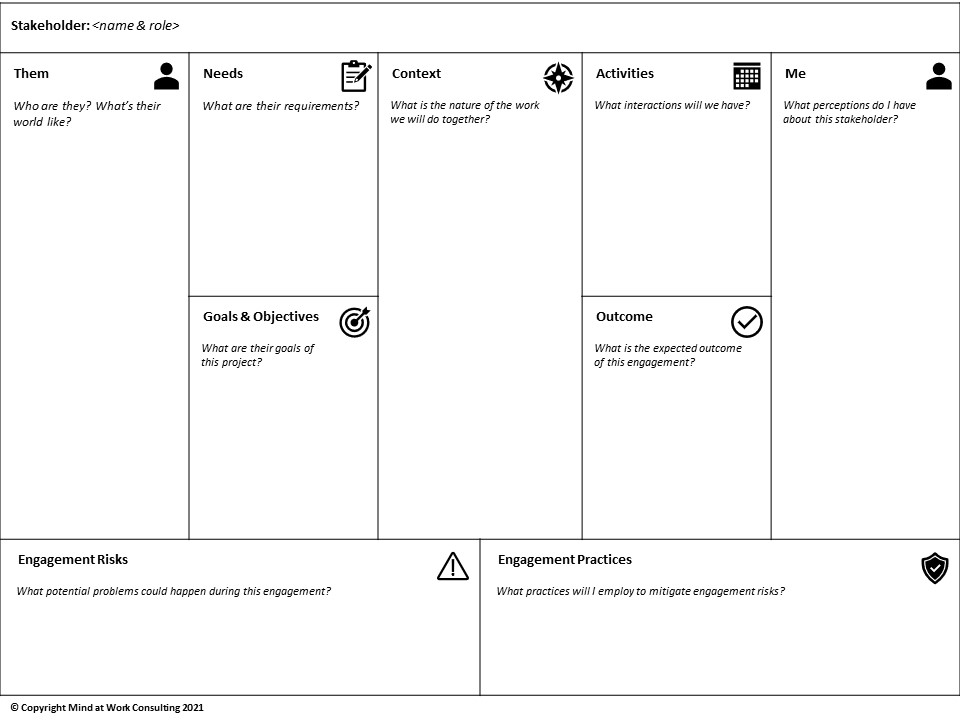
Kathy Berkidge, Agile BA Consultant and Coach, Mind at Work Consulting
Upcoming Live Streaming Course: Successful Stakeholder Engagement: Practical Techniques to Build Connection and Rapport – 25 March 2022
Effective stakeholder engagement can mean the difference between successful project delivery and project failure. We must work closely with our stakeholders to understand their needs and concerns to ensure they support the project and are willing to contribute. If we don’t engage stakeholders successfully, information may be missed or misinterpreted leading to products and services that fail to deliver the outcomes expected.
There are many barriers to stakeholder engagement, including:
- Lack of vision or not understanding the project context
- Resistance to share information
- Failure to understand what’s in it for them
- Misinterpretation of their needs
- Lack of available time
- Poor communication
- Lack of trust
- Previous history or negative perceptions from past experiences and projects
- Fear of change
We must plan our approach carefully to avoid these issues and create effective working relationships. Conducting stakeholder analysis helps us understand various stakeholder types and attitudes to plan how to engage them and keep them engaged.
While there are many tools and techniques to perform stakeholder analysis, we need to analyse the mindset of our stakeholders – a deeper level of analysis – to understand how they will react in various situations, and how we may respond to them.
We need to examine their perceptions, beliefs, and attitudes in detail to identify how we can best work with them to maintain healthy, productive relationships. This means we need to be prepared to adapt to situations that arise with them, while avoiding causing misunderstanding, confusion, or conflict. Importantly, we must look within ourselves to understand how our behaviour, words and actions may be perceived. This is where mindfulness is needed.
Through greater awareness, we can remain conscious of our own attitudes when engaging with our stakeholders, as well as their position. Mindfulness helps us be more attuned to our stakeholders’ needs while remaining calm and considered with even with the most challenging stakeholders. It helps us focus, remain present and truly listen to our stakeholders. As this great quote from Maya Angelou says, “People won’t remember what you said or did, but they will remember how you made them feel”. We can help our stakeholders feel heard, understood and that we care about their needs and concerns. The ‘Stakeholder Engagement Canvas’ is a new tool that helps us perform that deeper, more thoughtful level of stakeholder analysis. It looks at various aspects of the stakeholder’s mindset in context to the project as well as examine how we can remain mindful throughout our engagement with them.

The canvas contains nine key elements.
- Them – Who are they and what’s their world like?
- Needs – What are their requirements?
- Goals & Objectives – What does success look like for them?
- Context – What is the nature of the work we will do together?
- Activities – What interactions will we have?
- Outcome – What is their expected outcome of this engagement?
- Me – What perceptions do I have of this stakeholder?
- Risks – What potential problems could occur during this engagement?
- Practices – What practices will I employ to mitigate engagement risks?
Each element is considered carefully to enable us to conduct a detailed analysis of our stakeholder. With all elements explored, we can put together a plan that will ensure that we effectively work with our stakeholder and ensure successful stakeholder engagement.


